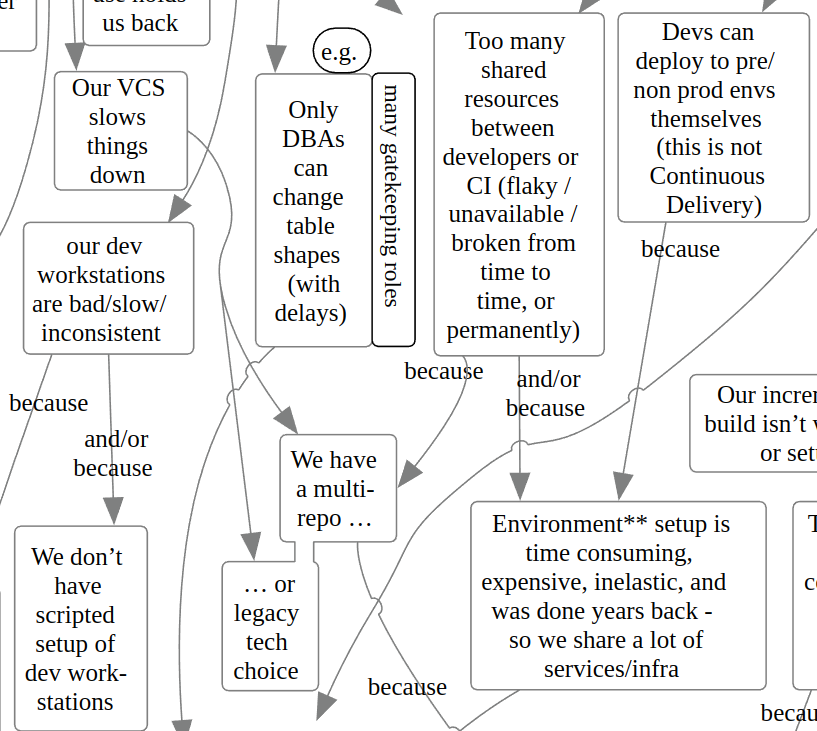Current Reality Trees - how to use them to cut through dev & ops problems
Reality trees are a tool for diagramming the problems that a team, department or organization has on multiple topics - including software delivery. They're not quick to make, but once they are created and reviewers have no more suggestions for changing them, they can help show where the root cause of a problem can be. Paul has made a general software delivery one and published it, but for this talk, will show one that leans towards root and 'proximate' causes that DevOps experts would recognize. After this talk you should be able to build current reality trees from scratch for your org/team.
【Translated by AI】
現實樹(Reality Tree)是一種用於圖示化描繪一個團隊、部門或組織在多個主題上(包括軟體交付)所面臨的問題的工具。它們並非快捷製作,但一旦創建完成,且審閲者沒有更多修改建議,它們就能幫助顯示問題的根源所在。Paul 已經製作並發佈了一個常規的軟體交付現實樹,但在這次演講中,他將展示一個著重於 DevOps 專家所認知的根源和「近因」的現實樹。在這場演講之後,您應該能夠從頭開始為您的組織/團隊構建當前現實樹。

(此為 Paul 繪製的 Reality trees 局部圖,演講將會展示全貌。)

Paul Hammant
Trunk-Based Development
Expert
Paul Hammant has been teaching trunk-based development for 25 years to delivery organizations and consultancies. Sometimes embedded in the larger team and department, and sometimes as a consultant engaging for shorter durations. His materials were used in the famous Continuous Delivery book, and has two books of his one - the first on TBD and the second on value stream mapping. He's also known for being co-creator of the web testing technology Selenium, 20 years ago.
【Translate by AI】
Paul Hammant 在過去 25 年一直在教導交付組織和諮詢公司進行主幹式開發。有時他會融入更大的團隊和部門,有時則以顧問的身份參與較短的期間。他的資料曾在著名的《持續交付》一書中使用,而他自己也出版了兩本書 - 一本關於主幹式開發,另一本則是關於價值流程圖。他還因為在 20 年前共同創造了 Selenium 網路測試技術而聞名。
通識
ROOM1F B棟
FORM現場演講
LANGUAGE英文